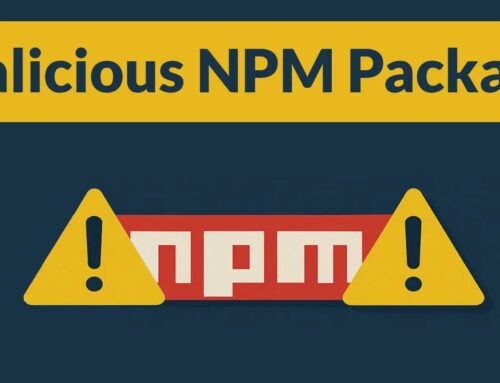
Hackers Compromise Intelligence Website Used by CIA and Other Agencies
Unclassified U.S. Intelligence Website Breached: A Deep Dive into the Attack on the ARC
The digital perimeter of U.S. national security has once again been tested. Unidentified sophisticated actors have successfully breached the Acquisition Research Center (ARC) website, an unclassified yet critical portal used by agencies including the CIA and other U.S. government entities for managing sensitive contracts. This incident, confirmed by the National Reconnaissance Office (NRO), underscores the persistent and evolving threat landscape facing even seemingly less critical, outward-facing government systems. As cybersecurity analysts, understanding the implications and potential vulnerabilities highlighted by such an attack is paramount.
The Target: Acquisition Research Center (ARC) Website
The compromised platform, the Acquisition Research Center (ARC) website, serves as an essential hub for government contracting. While described as an “unclassified portal,” its function extends far beyond simple public information dissemination. It
facilitates the complex process of managing vast numbers of government contracts, many of which involve sensitive operations and highly valuable intelligence assets. The NRO, the spy satellite service, operates this specific platform, making
the breach particularly noteworthy due to the agency’s critical role in national security.
The distinction between “classified” and “unclassified” can sometimes lead to a false sense of security. Even unclassified systems, when interconnected with sensitive operations or used for managing critical dataflows, become attractive targets for adversaries. Access to contract information, even if not classified per se, could provide an adversary with invaluable intelligence on supply chains, operational dependencies, and strategic priorities of U.S. intelligence agencies. The specific method or vulnerability exploited in this attack has not been publicly disclosed, thus no specific CVE number is available at this time. However, such breaches often stem from common web application vulnerabilities or sophisticated social engineering tactics.
Implications for National Security and Supply Chain Integrity
A breach of a platform like the ARC website carries significant implications beyond data exfiltration. Adversaries could potentially:
- Gather Intelligence: Even unclassified contract details can reveal sensitive operational patterns, technological requirements, and vendor relationships. This “reconnaissance” information can be aggregated to build a comprehensive picture of U.S. intelligence capabilities and weaknesses.
- Facilitate Future Attacks: Information gleaned from the ARC, such as vendor lists or typical communication channels, could be used to craft highly targeted spear-phishing campaigns against contractors or government employees.
- Supply Chain Compromise: Understanding the intricate network of contractors and suppliers could enable adversaries to identify potential points of entry for supply chain attacks, potentially introducing malicious hardware or software into critical government infrastructures.
- Reputational Damage: A breach of this nature erodes public trust and signals to adversaries that U.S. government systems, even those seemingly less critical, are not impervious.
Common Attack Vectors for Web Portals
While the exact methodology of the ARC breach remains undisclosed, historical incidents involving web portal compromises often leverage one or more of the following common attack vectors:
- SQL Injection: Injecting malicious SQL code to manipulate backend databases.
- Cross-Site Scripting (XSS): Injecting client-side scripts to compromise user sessions or deface websites.
- Broken Authentication and Session Management: Exploiting weak authentication mechanisms or session token vulnerabilities.
- Security Misconfigurations: Default credentials, open ports, or improperly configured servers.
- Outdated Software & Known Vulnerabilities: Exploiting unpatched vulnerabilities in web servers, content management systems (CMS), or plugins. For example, a known vulnerability in a widely used web server like Apache HTTP Server, such as CVE-2021-44790 (Server-Side Request Forgery), if unpatched, could provide a pathway.
- Social Engineering/Phishing: Tricking legitimate users into revealing credentials or executing malicious code.
Remediation Actions and Proactive Defense Strategies
In light of this incident, it’s critical for all organizations, especially those managing sensitive data, to review and bolster their cybersecurity postures. While specific to the ARC incident, the following mitigation strategies are broadly applicable:
- Regular Penetration Testing and Vulnerability Scans: Proactive identification of weaknesses is paramount. Comprehensive application security testing should be standard practice.
- Strong Access Controls and Multi-Factor Authentication (MFA): Implement least privilege principles and enforce MFA across all critical systems, even for unclassified portals.
- Continuous Monitoring and Threat Detection: Deploy robust Security Information and Event Management (SIEM) systems and Endpoint Detection and Response (EDR) solutions to detect anomalous activity in real-time.
- Software Patch Management: Establish a rigorous patching schedule for all operating systems, web servers, applications, and third-party libraries.
- Web Application Firewall (WAF) Deployment: A WAF can provide a crucial layer of defense against common web-based attacks like SQL injection and XSS.
- Employee Training and Awareness: Educate staff on the latest phishing and social engineering techniques. Employees are often the weakest link.
- Incident Response Plan: Develop and regularly test a comprehensive incident response plan to minimize damage and ensure rapid recovery in the event of a breach.
Tools for Detection, Scanning, and Mitigation
Leveraging the right tools is essential for maintaining a strong security posture. Here are some categories and examples:
| Tool Category | Specific Tool/Type | Purpose | Link (General) |
|---|---|---|---|
| Vulnerability Scanners | Nessus, OpenVAS | Automated scanning for known vulnerabilities in systems and applications. | Nessus / OpenVAS |
| Web Application Scanners | OWASP ZAP, Burp Suite (Community/Pro) | Identifying vulnerabilities specific to web applications (e.g., SQL Injection, XSS). | OWASP ZAP / Burp Suite |
| Security Information and Event Management (SIEM) | Splunk, IBM QRadar, Elastic SIEM | Centralized collection and analysis of security logs for threat detection. | Splunk / IBM QRadar |
| Web Application Firewall (WAF) | Cloudflare WAF, ModSecurity | Protecting web applications from common web-based attacks at the application layer. | Cloudflare WAF / ModSecurity |
| Endpoint Detection and Response (EDR) | CrowdStrike Falcon, Microsoft Defender ATP | Continuous monitoring and response to threats on endpoints (e.g., servers hosting the web app). | CrowdStrike Falcon / Microsoft Defender |
Key Takeaways from the ARC Website Breach
The compromise of the NRO-operated ARC website serves as a stark reminder:
- No system, regardless of its classification status, is immune to attack. Attackers will always seek the path of least resistance or the highest potential intelligence gain.
- Even “unclassified” data can hold immense strategic value for adversaries, especially when aggregated or used to inform more targeted attacks.
- Proactive and layered cybersecurity defenses, coupled with continuous vigilance, are non-negotiable for any organization, particularly those within critical infrastructure or government sectors. The focus must shift from simply reacting to breaches to building resilient systems designed to anticipate and deter sophisticated threats.





